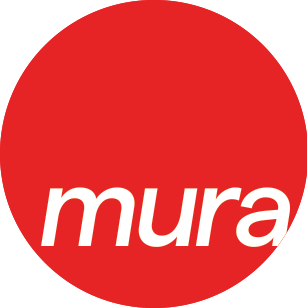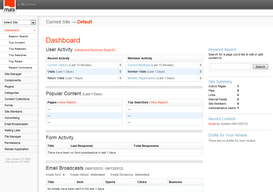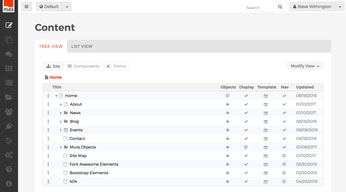

Unclaimed: Are are working at Mura CMS ?
Mura CMS Reviews & Product Details
Mura CMS is a content management platform that provides a user-friendly platform for managing and organizing website content. Its flexible architecture and robust set of features for managing dynamic websites, blogs, and e-commerce sites make it one of the preferred software in its space, with core features that include responsive design, SEO optimization, customizable templates, and multi-language support. Mura CMS is ideal for those looking for a powerful and flexible platform to manage their website content, with the ability to easily customize and extend the functionality to meet their specific needs.

| Capabilities |
|
|---|---|
| Segment |
|
| Deployment | Cloud / SaaS / Web-Based, On-Premise Linux, On-Premise Windows |
| Support | 24/7 (Live rep), Chat, Email/Help Desk, FAQs/Forum, Knowledge Base, Phone Support |
| Training | Documentation |
| Languages | English |






Compare Mura CMS with other popular tools in the same category.

Onboarding team helps to make sure you know how to use the software and are set up for success.
There are no outside Mura "how to" materials. If I have an issue, I have to go to support - the team is super helpful I just sometimes wish I could refer to materials for smaller questions rather than have to reach out to the team.
Our last website was hard-coded and required a developer if we wanted to make any changes or build any new pages. Now, as a Marketer, I am able to build out new content myself!
The things I like about this program is that is a versatile tool for content management solution and a cloud-based web hosting with providers like Amazon ready to be used right out of the box, allowing small and large industries to use it for running and manage websites without any issues. It offers a centralized platform for users to automate events, tasks, it has a safe development environment allowing the user to make quick fixes, improvements of functionalities and daily backups of the website.
There are not many bad things you can say about the software, it is very intuitive and easy to understand and quickly jump into it, ion top of that it provides not only a solution for web hosting but as an educational and training platform for web developers. But like any cloud hosting-based software, they present their limitations in terms of the resources present in the purchased plan you choose. Customization is somewhat limited since you don't have an extensive palette of templates, at least for the basic plans.
Mura CMS has greatly facilitated the programming part since i am not skilled enough with coding, it also has giving me the ease of choosing what i want to use on my page, extra features that I would want to add to stand out over the other blogs and generate more visitors, which is so important as a blogger. All this is so practical if you need to create a website to let's for a project that you want to develop and not having the time to spend in a course of months in order to obtain the minimum knowledge to program a website by yourself.
Mura has the flexibility to create highly customized sites, then hand off the day management of information to multiple people in your organization (having little to no web design experience).
Documentation tends to lag behind production, but most of what you need can be found online with a little digging.
We do a lot of information management using Mura. Everything from registration for our training events to tracking location information being reported by amateur radio weather spotters.
Mura is easy to use and flexible. I enjoy working with it a ton. Honestly, though, what I like best about Mura is knowing there's an awesome team of people behind it, who are always quick to answer my questions.
The Mura support community is strong, and answers to my basic questions about the platform are always available, but it isn't as big as some other options.
Mura makes it easy for us to tell our story dynamically. Also, we have migrated much of our content from external sites (Flipbook, Eventbrite, and so on) seamlessly into our website, making our website's visitors' experiences more coherent.
Ease of use, open source, great documentation, top of the notch onsite and remote training, "Beans" (java term) as an organized structure of useful methods, Javascript framework
Steep learning curve, update structure, table structure
We build sites for clients who need a fully tailored solution to their needs. We utilize the power to build just about anything in mura and make it scalable. Currently, our team is looking into making it fully headless and using mura solely as a backend solution and cannot wait to see the end results. They constantly update mura to keep up with times and create new frontend frameworks to make a developers life a little easier.
The simplicity of building a mura page or forms or some other content with drag and drop UI make life a lot easier.
The documentation is confusing and should be better organized.
I'm managing a network of 10 sites with less efforts then before. I really love the multisite option in Mura that let me manage every single site form one backend, I can share object between sites and Ii have less passwsord to remember. Also I need to manage one single database.
Really easy to build plugins when needed and theming makes customizations easy. Also site bundles and site-copying makes it easy to setup template websites to use as boiler plates for new customer sites.. Also multi-site tenancy in one instance is really great.
The API could use a little more online documentation, but I've found you can often just look at the source code to solve most questions.
One customer I have is an international fanclub stie, with many child / chapter sites. Mura makes it super easy to spin up chapter sites as those chapters come online.
Very powerful CMS functionality. Plugin architecture allows for extensive customisation and integration. Good admin UI which is relatively easy to train non technical users to use.
While decent documentation exists for how to use and extend the product, core functionality (i.e. the guts of how the system works) is not. This means that when something is not working as intended (esp. when extending and overriding core functionality) it can sometimes be hard to work out why. While Mura does contain a reasonable roles and permissions system, the permissions themselves are fixed - i.e. you can only set ~4 different levels of access to a section of content for a user role - which makes complete sense with respect to pages etc. but doesn't allow custom permissions to be set and used when extending using plugins - such as giving a particular role permission to undertake a custom action. This can be worked round by effectively hard coding a role within a plugin to have access to particular functionality - i.e. using the role as a permission - but does not allow the flexibility a true m:n:m user : roles : permissions hierarchy to be configured.
We use Mura as the core platform for content managed sites and applications. We develop the majority of the custom functionality our client's require for these systems as plugins within Mura, allowing us to integrate with numerous third party systems with minimal overhead.
From a content manager's perspective, Mura is very simple to use, and yet has everything needed to build and maintain more intricate content, such as forms, galleries, calendars, right out of the box. As a designer, I like that Mura is integrated with Bootstrap, jQuery, LESS. As a developer, I like that Mura is open source and built in the powerful CFML language. As a manager, I like that Mura is free, as is the database (MySQL) and engine (Lucee) I run it on. The community is great also
I'd prefer if more people used Mura. The sad fact is that it is not always the best program that is the most popular. I'd like if if I didn't have to explain what Lucee is, or correct all the misconceptions about CFML. I'd also like to see more comments in the open source code. That would help in understanding what is going on under the hood.
I am running Mura on government websites, non profit websites, and small business websites. We are using plugins, integrating existing applications, serving up data, promoting projects and programs - all packaged in modern themes.
The administrative user interface and the flexibility of template design. The user of Bootstrap for its theme and administration interface although you are not required to use bootstrap for your templates
We would like to have the option to publish a static version of our website or at least a hybrid version of it,.
Content providers have a relative easy way to keep their content updated with involving IT.